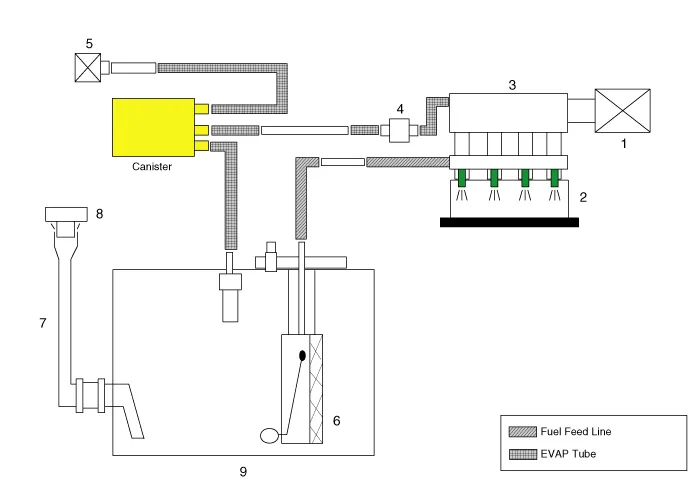Hyundai Elantra (CN7): Evaporative Emission Control System / Schematic diagrams
| Schematic Diagram |

| 1. Air cleaner 2. Delivery pipe & injector 3. Engine 4. Purge control solenoid valve (PCSV) 5. Fuel tank air filter | 6. Fuel pump 7. Fuel filler neck 8. Fuel filler cap 9. Fuel tank |
Repair procedures Removal1.Turn the ignition switch OFF and disconnect the negative (-) battery cable. 2.Disconnect the vent hose (A).3.Remove the fuel tank air filter (A) by rotating it 30 degrees.
Other information:
Hyundai Elantra (CN7) 2021-2025 Service Manual: Wireless Power Charging Unit
Components and positions Components Circuit diagram Circuit Diagram Repair procedures Removal • Handling wireless charging system parts by wet hands may cause electric shock. 1.Disconnect the negative (-) battery terminal.
Hyundai Elantra (CN7) 2021-2025 Service Manual: Troubleshooting
Diagnosis with Diagnostic tool1.In the body electrical system, failure can be quickly diagnosed by using the vehicle diagnostic system (Diagnostic tool).The diagnostic system (Diagnostic tool) provides the following information.(1)Fault Code Searching : Checking failure and code number (DTC)(2)Data Analysis : Checking the system input/output data s
Categories
- Manuals Home
- Hyundai Elantra Owners Manual
- Hyundai Elantra Service Manual
- Repair procedures
- Vehicle Information
- Front Bumper
- New on site
- Most important about car
